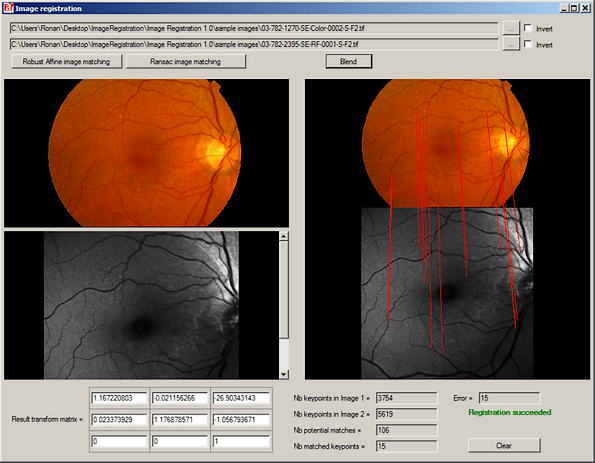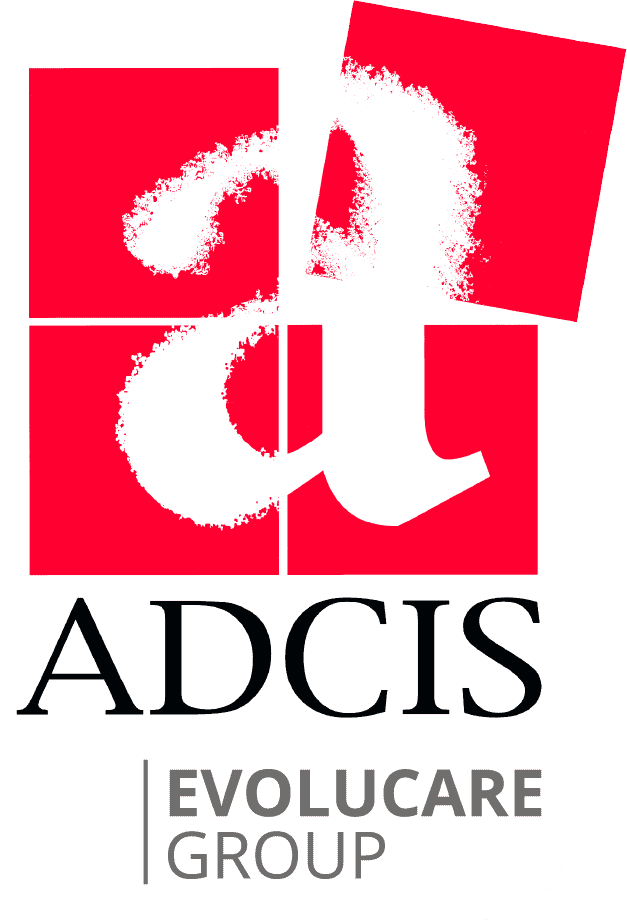REGISTER IMAGES TO EXHIBIT CHANGES BETWEEN IMAGES AND TRACK PROCESS EVOLUTION
Accurately registering images has been very difficult, especially for increasingly complex image processing applications. In some cases, the location of an object of interest changes from image to image, and in some others different sensors are used to capture the same object(s), generating images of different modalities. Whatever the application, a perfect registration needs to be performed to obtain all images in the same reference coordinate system. Once the images are in the same coordinate system, they can be analyzed and features like distortion, motion direction and speed can be computed accurately.
Image Registration is an Aphelion™ optional extension that automatically registers images and provides the transformation matrix characterizing the differences between two successive images. When registration fails, an optional manual registration process is provided. Image Registration includes an intuitive user interface to quickly browse through the set of images to be registered, to execute the registration process, and to display a pair of registered images. The registered images are overlaid with the front image sufficiently transparent so the features of both images can be seen.

This extension was originally developed for an R&D project in ophthalmology where retinal images of different modalities (e.g., color fundus and auto-fluorescence images) were to be registered to track the evolution of pathologies. It has been adapted to more common and simpler applications and has proven to be robust and user-friendly.
The Image Registration software was developed in partnership with a Research Laboratory of the School of Mines of Paris, France.
Registration Methods
If the user does not manually define reference points, the Image Registration automatically determines reference points according to image variations in their vicinity using a Best Bin First algorithm1. It then computes the affine transformation matrix that provides the best fit of one image over another using either of the two following methods:
- Deterministic – The Deterministic method pairs corresponding points in the two images and then selects the reference point pairs that provide the best match between the two images. It then iterates this process to refine the matrix computation. The iteration process stops when the matrix correctly matches the remaining point pairs within an error threshold manually specified by the user;
- Random Sample Consensus (Ransac) – The Ransac method iterates over the point pairs using a Deterministic method. However, at each iteration, Ransac randomly defines a subset of points and then returns the best affine transformation matrix found. It usually succeeds when the Deterministic method fails, particularly when images are noisy.
User Interface
From the User Interface of Image Registration, a user can perform the following tasks:
- Load a series of images as thumbnails in an image gallery located at the bottom of the interface;
- Display each image in a large window and define one of them as the reference image. Registration can be performed using this reference image, or between two successive images;
- Specify either manual or automatic registration;
- Specify reference points interactively in one image using the mouse and associate them with a corresponding point in another image;
- Compute the transformation matrix between the two images;
- Display matching points between a pair of images when using automatic registration is used;
- Provide a matching score; and
- Display the pair of registered images using a blend function that overlays one image on top of the other one, using transparency.

Data output
Image Registration generates the following data and stores the data in an XML file:
- A set of affine transformation matrices for each pair of images; and
- A list of coordinates of reference points in each pair of images used during the matching process.
The Image Registration extension is a stand-alone application, but its algorithms are also available as .Net components that can be called from any third party application developed in a .Net compatible programming language.
The registration algorithms can also be applied in confocal microscopy applications to aid the registration of an image stack captured at different Z depths. The Aphelion 3D Image Display Extensions, another Aphelion Imaging Software Suite optional extension, can then be used to display the image stack as a 3D volume using powerful rendering techniques. The 3D data can be processed by the optional Aphelion 3D Image Processing Extensions.
Main benefits of Image Registration
- Registers images of different modalities
- Selects reference points automatically
- Generates and displays the image transformation matrices
- Registers confocal microscope images to aid 3D reconstruction
- Provides interoperability with other Aphelion Imaging Software Suite extensions
